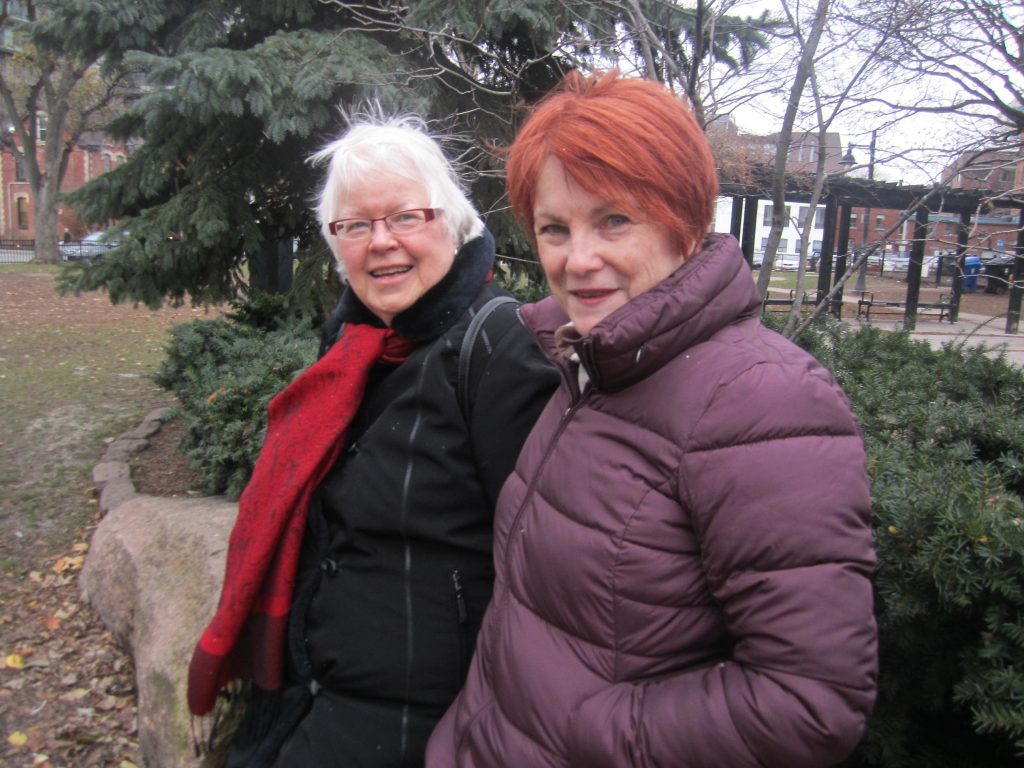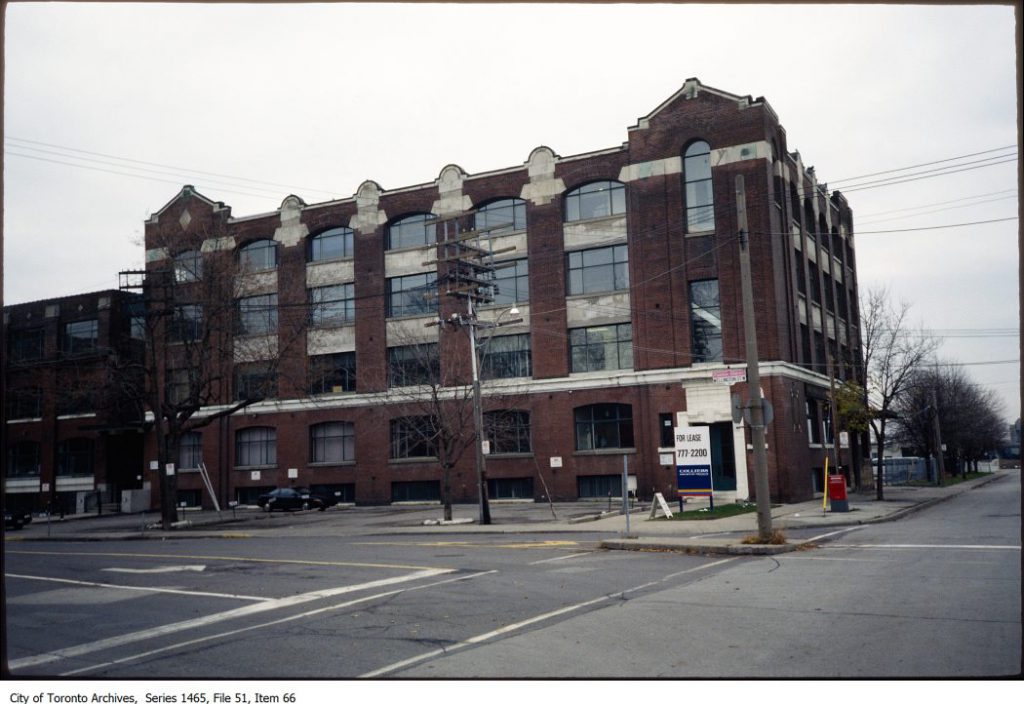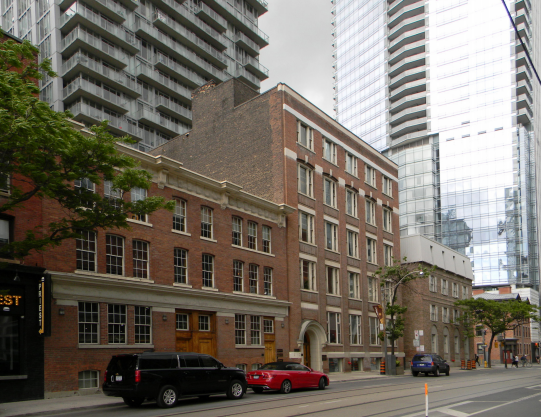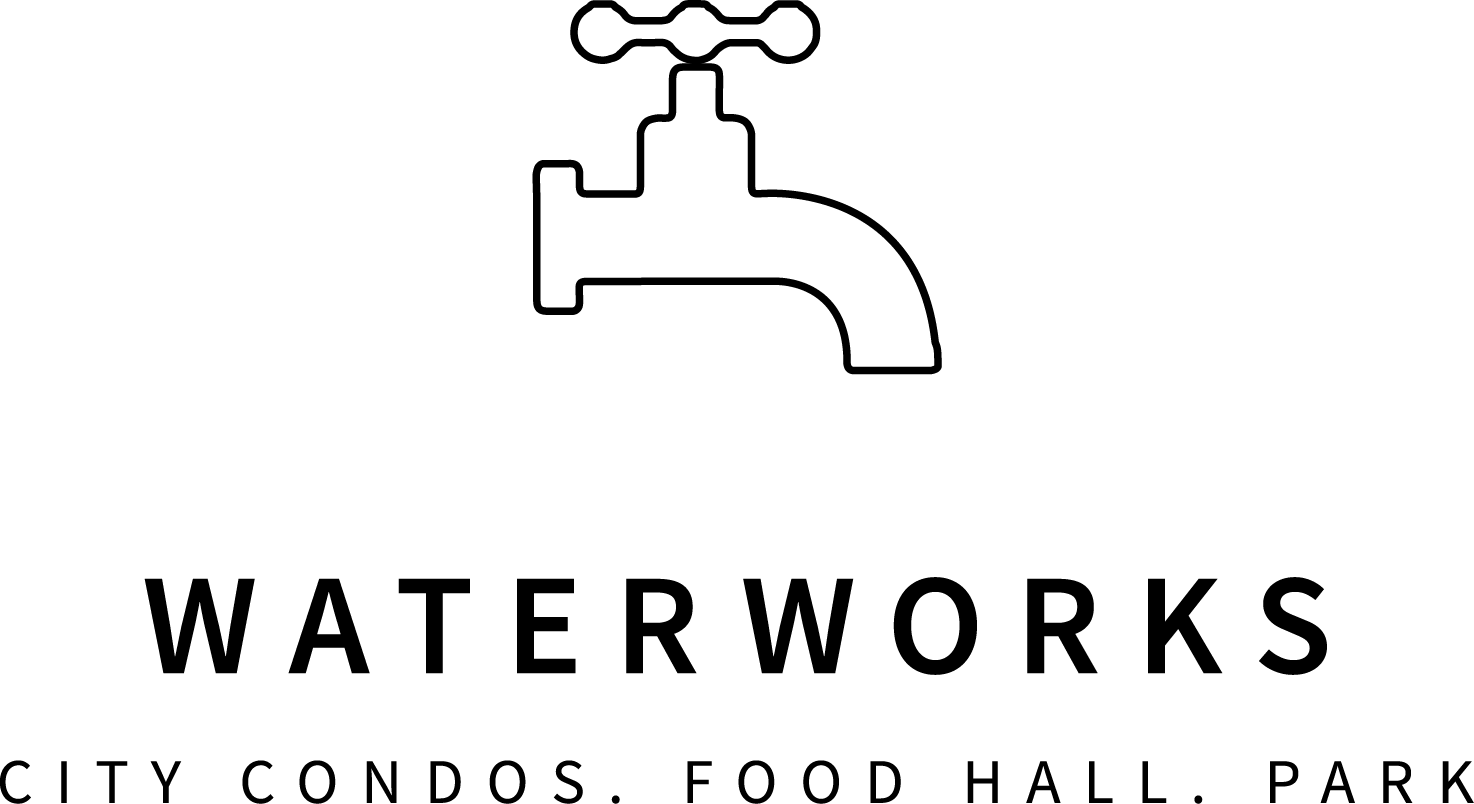Long-time Garment District residents Valerie Eggertson and Ann Marie Strapp have watched the Waterworks neighbourhood change radically over the past two decades. As founding members of The Garment District Neighbourhood Association, a group that represents residents, both owners and renters, living in the area, the two have played an integral role in influencing that change.

“It’s gentrifying for sure,” says Strapp, who has lived in the neighbourhood since 2001. “But we’re hoping it can hold on to some of its edge. We moved here for that edge, and we don’t want it to go away,” agrees Eggertson, who moved into her condo in 1998.
When Strapp and Eggertson moved here, the neighbourhood was still suffering the after-effects of an exodus of manufacturers from downtown Toronto in the ‘70s and ‘80s. Industrial spaces had been abandoned and with zoning laws preventing owners from converting manufacturing spaces to other uses, many buildings were in a state of disrepair, and there wasn’t much foot traffic.

“I had a view of St. Andrew’s Playground, which I thought was great,” remembers Eggertson. But her friends weren’t so excited. They were worried about what she might see when she looked out her window. With very few families living nearby, St. Andrew’s Playground had become vulnerable to misuse. Since then, the park has been completely transformed. Eggertson has witnessed the change through the window of her condo on Camden Street.
“Last Saturday, I looked out, and the park was full of people doing yoga,” she laughs. “In the summertime, there are few patches of green to sit on. People who work in the area take their lunches there, and sometimes you’ll see kids from nearby school playing games.”
The neighbourhood’s regeneration is the result of zoning changes by the City of Toronto in 1996. New zoning marked the King-Spadina area as a mixed-use neighbourhood, allowing for residential and commercial spaces where once there had been factories and warehouses.
The population has blossomed since then. In 1996, there were 945 residences in the King-Spadina neighbourhood. Now, two decades later, there are more than 19,000 homes in King-Spadina, generally considered to be bound by University Avenue, Bathurst Street, Front Street, and Queen Street.
The Garment District Neighbourhood Association makes a point of staying up to date on the many developments in the area and sharing that information with neighbours.
“The impetus for our group came about two years ago,” recalls Eggertson. “I heard there was going to be an Ace Hotel nearby. There was supposed to be a public consultation a few days later, but no one knew about it. I went around to deliver a flyer. I felt people should know about it.”
As a result of the GDNA’s attendance at that meeting, the Ace Hotel developers made adjustments to their plan. It was a win for the group, which now has 24 voting members and an email list of more than 70 residents.
“There’s a lot of development. Some of it is nice. Some of it is not so nice,” she says. “We worry about lifestyle issues for residents.”

Making the area friendly for pedestrians and transit riders is a top concern because most people who move to the neighbourhood now typically come without cars. “Everything we need is here now,” says Eggertson.
“We used to have to drive for groceries,” she remembers. But no longer. Now the area is a food mecca, with restaurants and food shops around every corner.
In addition to the diverse retail services it offers, the Waterworks neighbourhood offers young professional residents the chance to walk to work. According to the GDNA, the area has a significant employee population. There were 21,400 workers there in 1996, but in 2015, an estimated 56,744 people were employed in the area.
Whereas once King West offered mainly manufacturing jobs, now the work is predominantly in the information and cultural sectors with many publishing, new media, retail and entertainment companies evident in the neighbourhood.
The group continues to advocate in the neighbourhood, drawing attention to such issues as parking, noise, streetscape issues and availability of public space. “Some people want to fix up Rush Lane,” says Eggertson, referring to the popularly known Graffiti Alley, located just north of the Waterworks building. “Don’t fancy it up,” she says. “Leave it alone. That’s its beauty.” They’re out to protect the true character of the neighbourhood, that Garment District “edge” they love so much.


